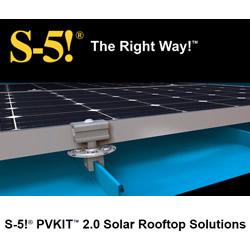Renewable Energy Certificates in North America : Bharatbook.com
Bharatbook.com (http://www.bharatbook.com/detail.asp?id=71274) has announced the addition of "Renewable Energy Certificates in North America" to their offering.
Bharatbook.com announces that a new market research report "Renewable Energy Certificates" (http://www.bharatbook.com/detail.asp?id=71274)
Renewable Energy Certificates (RECs) or Green Tags are market-based commodity designed to facilitate transactions between buyers and sellers of renewable energy, free from the constraints of the electricity grid. By unbundling the renewable characteristic from the actual electricity commodity, RECs allow renewable energy generators more flexibility in the distribution of their products, and therefore encourages further development of the renewable energy market. In states or regions that have an REC program, one REC represents the environmental attributes generally associated with one megawatt-hour (MWh) of electricity from renewable resources.
Currently, the United States has two distinct REC markets - the compliance market and the voluntary market. The compliance market is driven by state government regulation, while consumers drive the voluntary market interested in supporting renewable energy or reducing their environmental footprint. Besides having different drivers, these two markets for renewable energy also differ in pricing. Within the voluntary market, pricing typically reflects the additional cost of renewable generation above conventional resources. Additional factors affecting voluntary REC prices are the resource type and location, and whether the generator is new or already exists. Prices within the compliance market reflect the supply-and-demand balance for the commodity value of 1 MWh of renewable energy. Because each state designs its own renewables program and corresponding REC market, prices vary across compliance markets.
Standardization initiatives are developing on the regional and national levels. For example, the California Energy Commission and the Western Electricity Coordinating Council established the Western Renewable Energy Generation Information System (WREGIS) to issue, register, and track RECs for the territory covered by the Western Interconnection. Other similar regional tracking organizations include the PJM Generation Attribute Tracking System (GATS) and the New England Power Pool Generation Information System (NEPOOL GIS). Each of these organizations issues certificates with unique serial numbers that represent the attributes of the generation for each megawatt-hour produced by qualified generators. States that are parries to the organization may use and exchange certificates within each tracking system.
State efforts suggest the creation of a national marketplace likely will become a reality in the near future. Creating a nationwide, perhaps global, fungible REC commodity also could facilitate a national RPS, although significant obstacles remain. Nevertheless, REC advancements also serve as a foundation for national carbon trading. For companies actively engaged today, the desirable benefits of standard contracting, verification, and revenue stability will foster opportunities in regional and global carbon trading markets in the future.
As REC markets develop, key issues are being addressed regarding market interaction. The first issue involves certificate verification, with respect to both verification of the renewable attributes of power and the ownership of those attributes. Second, developers and utilities focus increasingly on protecting the revenue stream produced by REC sales by directing the revenue toward the expansion of renewable power generation. Finally, utilities and regulators across the country will focus on standardizing REC programs, to capture the value of consistency and homogeneity for healthy REC trading markets.
For more information kindly visit: http://www.bharatbook.com/detail.asp?id=71274
Featured Product

S-5!® PVKIT™ 2.0 Solar Rooftop Solutions
The concept of combining PV arrays with standing seam metal roofing is growing-for good reasons. Metal roofs have a life expectancy of more than 40 years. Shouldn't the mounting system last as long? With S-5! zero-penetration attachment technology and PVKIT 2.0, the solarized metal roof is the most sustainable system available -and without compromising roof warranties! PVKIT 2.0 is the also the best solution for attaching PV modules directly to any exposed fastener metal roof.
